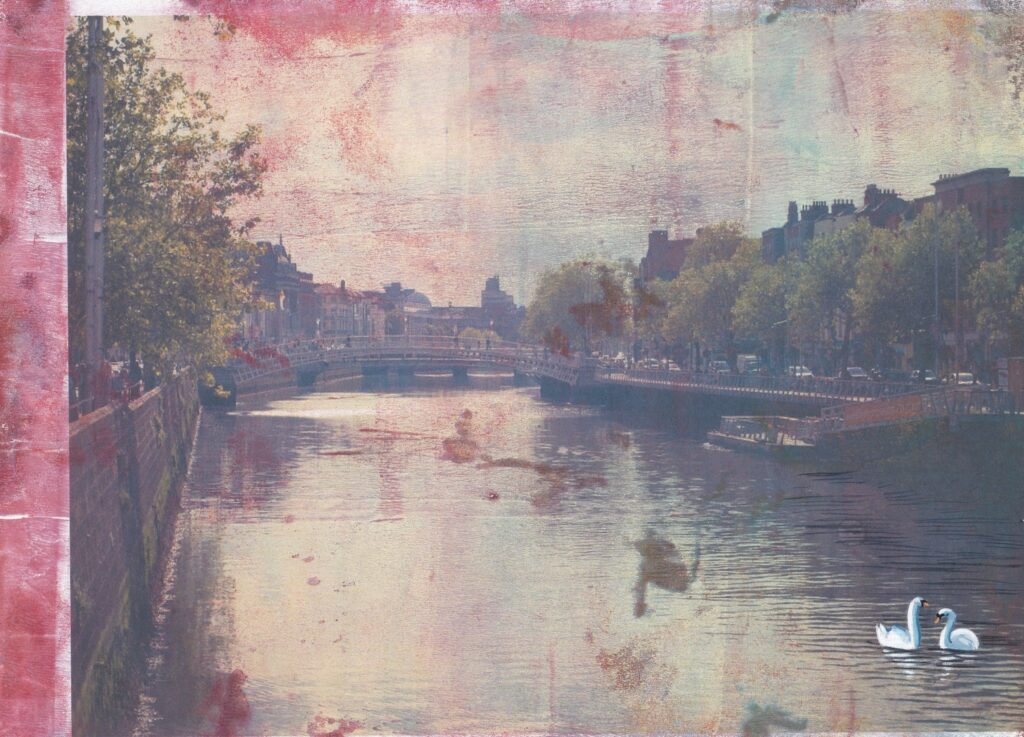The people who make horror movies so often love to explain themselves. They desperately want us to know how unbelievably clever they are. Instead of simply leaving us to ponder all of the unknowns, writers and directors go out of their way to make sure that we know everything, never seeming to realize that with every additional piece of information they offer, they create the opportunity for us to ask questions, to wonder why, to disbelieve. There is a reason almost all of the very best horror movies avoid this trap: because nothing is as frightening as uncertainty.
John Carpenter’s Halloween – a horror movie that is among the greatest ever made – manages to perfectly illustrate both concepts. Its sequels (Halloween 2, Halloween 4: The Return of Michael Myers, Halloween 5: The Revenge of Michael Myers, Halloween: The Curse of Michael Myers, Halloween H20: 20 Years Later)* never met a plot development they did not like, eventually getting itself to the point that Michael Myers was the weaponized creation of a druidic group calling itself the Cult of Thorn. Yes, that is a real thing that really happened.
But the original Halloween exists unburdened of the need to flesh out the running times of its many sequels. It is the barest of the bones storylines – Michael Myers returns home to kill his sister – and it focuses upon nothing else. If that seems either jarringly simple or remarkably rote, well, yes. Both are true.
Halloween starts in Haddonfield, Illinois. A young boy, dressed as a clown, stalks and then kills his older sister, then meets his shocked parents outside. John Carpenter filmed the scene from Michael’s perspective which was itself a terrifying choice. Viewers are literally Michael as he kills for the first time. Michael is dead-eyed in the aftermath of the killing; he is unmasked as the camera withdraws from the stunned family and from the house itself.
Fifteen years later, Michael lives at the Smith Grove Sanitarium. A psychologist and a nurse arrive to take Michael to court, but he escapes, kills a mechanic, steals the mechanic’s jumpsuit, grabs a white mask and knives, and returns home to Haddonfield, Illinois. It is again Halloween. He is an adult now but is otherwise unchanged: costumed, masked, and armed.
Michael pursues Laurie Strode for reasons that are never made clear. Halloween II would introduce, as a plot twist, the idea that Laurie Strode was Michael Myers’ other sister, but for the purposes of this movie, that is unknown. Laurie repeatedly sees Michael around town but does not recognize him. Meanwhile, Sam Loomis, one of the psychologists**, has followed Michael back to Haddonfield and sets about warning the town’s police about his presence and desire for violence. Loomis is ignored despite his dire prognostications.
The evening of Halloween itself begins and Michael kills three of Laurie’s friends. It is a testament to the movie’s achievement that, despite Halloween being often considered the genesis of slasher films, Myers kills fewer than ten total people. Strode confronts Myers, steering him clear of children that she was babysitting, and twice fights with him. During the second confrontation, Loomis shoots him six times. Myers falls out of a window and Loomis goes out on a balcony to verify the monster’s death; Myers is nowhere to be found. Loomis loses his breath. Strode starts to cry again. The credits roll.
That is the entirety of it: a man returns to his hometown to kill a woman. But that simplicity is its strength. There is nothing deeper to understand; there is nothing complicated to figure out. This isn’t a thousand puzzle pieces being fit together to make a scarier whole. It is a threat pursuing the threatened. During the early 2000s, when the Japanese conception of horror dominated the American marketplace, with remakes like The Ring proving very successful, that nation’s preference for the unknown accompanied it. Bad things happened to people, sometimes because of the decisions they made but often for no reason at all; what mattered were those bad things themselves. The mechanism was an afterthought.
The movies that followed Halloween always took great pains to make sure that their audiences understood exactly why bad things were happening to the characters on the screen. Jason Voorhees’s mother was slashing up camp counselors because her son had been abandoned to drown while at camp. Freddy Krueger is at war the community that punished his release from prison by burning him alive. Even adorable little Chucky is seeking to return to his human form.
Myers had no obvious reason. He wanted to kill but it was never clear why. It did not matter. But unlike those other films, the ones that came after Halloween had established the working model for slasher films, the only thing viewers knew was that Myers was back in Haddonfield and that the professionals pursuing him were terrified of his existence. As the movie unfolds, it becomes apparent that there is more to the hulking, masked man. He is seemingly unstoppable now. By the end of the movie, it is clear that there is more to the boy viewers first met and the man they now know. The movie’s credits hint at this; Myers is identified simply as The Shape. It implies truth to the existence that Loomis described earlier. Myers is literally evil, not as a descriptor, but as the physical manifestation of the concept.
The movie’s success is that it gives viewers enough to keep them watching without giving them so much that they get bored. What is shown is enough; what is unknown stays that way. What results is one of horror’s most iconic movies, its nightmarish sequels notwithstanding.
*****
Halloween also offered some of the most recognizable music ever attached to a horror film. Although plenty of other scary movies have had similarly spooky soundtracks – The Exorcist‘s “Tubular Bells” comes immediately to mind, as does Candyman’s “It Was Always You Helen” – Halloween’s synthesizer-and-piano theme exists among the genre’s giants. Written by John Carpenter, Halloween‘s writer and director, the music is as simple and driving as the movie itself. No time is wasted on frivolity; there is nothing extra.
https://www.youtube.com/watch?v=VLFx30Ijiq0
Even as Halloween itself fades into the genre’s background, replaced by bigger and but rarely better efforts, the music survives. Nine Inch Nails’ Trent Reznor and Atticus Ross took at a run at it recently but everything about the original remained as omnipresent and threatening as ever. It seems difficult to imagine it going anywhere either, what with how closely tied it is to the holiday itself.
*Halloween III: Season of the Witch was an attempt to reboot the series into an annual Halloween movie to be released every October with each new one featuring a different and unrelated story. And maybe it would have worked, except that Halloween III was unbelievably terrible, and featured one of the most annoying jingles ever worked into a big-screen movie.
**Halloween is littered with references to Alfred Hitchcock’s Psycho, including Loomis being named after that movie’s Sam Loomis. Halloween‘s much bigger and more obvious connection is Jamie Lee Curtis. Her mom is Janet Leigh, she of the famous shower scene. Here are some more fun facts.







I love the movie. It’s incredibly creepy, and Carpenter managed to fudge a lot of details because he did other things right. Watching the movie when I was younger, I never really noticed that it was clearly filmed in the spring or summer, as all the leaves are green. In the various “making of” shows that I’ve watched, the cast and crew mention that they had something like two bags of leaves to use.
But it doesn’t matter because, as you said, the movie works. I think part of the way the movie was kept prominent is that it’s easy to show on regular television, as there’s not much material to be censored. The first time I saw it was a showing on television, and it still scared the crap out of me.Report
@jason Question: Is your last name Voorhees? Followup Question: If it isn’t, can it be?Report
@jason But more seriously, yes! There is so much fudging around the corners to make the movie work – including the palm trees and the mountains in the background – but none of it matters, because it ends up working so well.
There is an argument to be made that Halloween benefits from the same thing that so many other introductory pieces of art benefit from, which is the lack of resources that necessitates the creativity necessary to make the thing go regardless.Report
I agree. Carpenter and crew made it work, focusing on a simple story.
(another point–the outside lockers and schoolrooms are pretty clearly California and not Illinois).
I do get Voorhees memes from FB friends whenever the 13th falls on a Friday.Report
My friend Pat loves horror movies. We had a Halloween movie night several years ago. He selected Rob Zombie’s remake of Halloweeen. I selected M by Fritz Lang. Pat’s response was “Damn You Lee, this is real scary not fake scary.”Report
This is an excellent essay.
I agree with you that American audiences demand exposition and explanation – whether it’s movies or real-life horrors – when there may be none. Japanese are much more accepting of ambiguity. Just look at mainstream success of Studio Ghibli, for instance.
Stephen King wrote about this in 1982: https://www.scribd.com/doc/87844780/Stephen-King-Why-We-Crave-Horror-MoviesReport